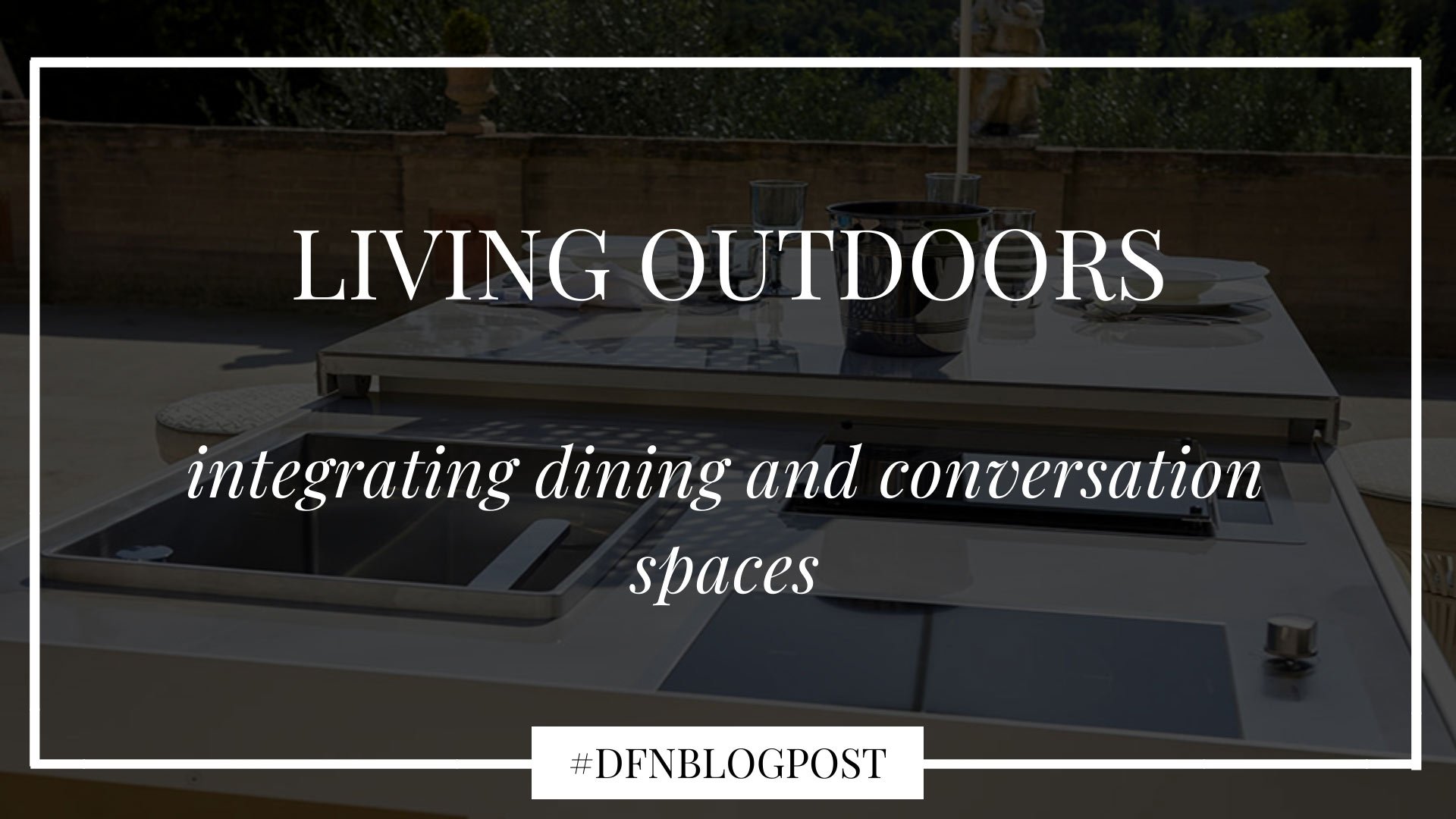
Over time, the layouts of the outdoor spaces in the designs of villas and luxury homes have undergone numerous changes, and this continues to happen with the changing trends and tastes of clients.
Nowadays, attention seems to have shifted significantly from the design of the house to the outdoors, focusing on the concept of open space, that is, integrating dining and conversation spaces.
This means designing multiple areas and strategically joining them, guaranteeing that your client has access to the various rooms and that they are comfortable. Naturally, they will want to experience these spaces in total comfort and to be able to move around with ease.
In this article, we will show you how to integrate dining and conversation spaces and, as a result, create a spacious and comfortable open-plan area.
Integrating dining and conversation spaces: 6 tips
Combining the kitchen, dining area, and living area will allow you to create a single warm and welcoming environment. Here are 6 tips on how best to integrate these spaces:
- Style: choose furniture, accessories and kitchen with the same concept;
- Give life to the open space: place the furnishings in contiguous environments and ensure continuity of style
- Choose a kitchen with an ergonomic layout: island, U or L;
- Living area: make sure that the arrangement of the furniture embraces the cooking area;
- Dining area incorporated into the kitchen: take care of the arrangement of the dining set;
- Last step: take care of the lighting.
Let’s continue step by step and analyze each step individually.
1. Style: choose furniture, accessories, and kitchen with the same concept
These areas should be interconnected not only on a spatial level but, above all, on an aesthetic level.
For this reason, for the first step, we recommend creating a personalized mood board for each environment, trying to choose outdoor furniture elements that have the same style, so that you can immediately set up a unique general concept and create a total look.
Specifically, you could opt for a furnishing style:
- Glamor;
- Modern;
All of this should be done to give a general sense of stylistic continuity to the open space you are dealing with.
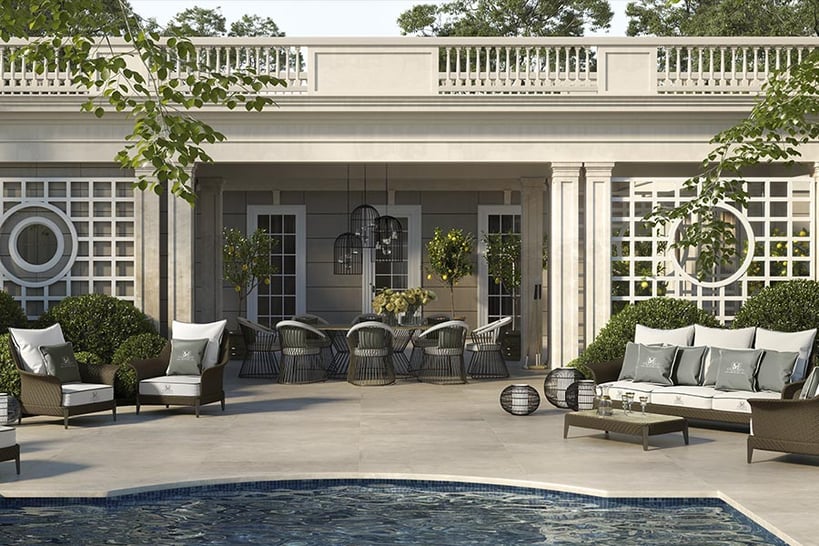
2. Give life to the open space: place the furnishings in contiguous environments and ensure continuity of style
The second design step involves the removal of any barriers that separate the various spaces that will be set up with the outdoor furniture: kitchen, living, and dining. This step is essential to create a large, unique space and to be able to favor the integration of the dining area and relaxation areas. If the stylistic choices have been made with care, a stylistic unicum will be obtained; therefore, each piece of furniture will be enhanced by the whole.
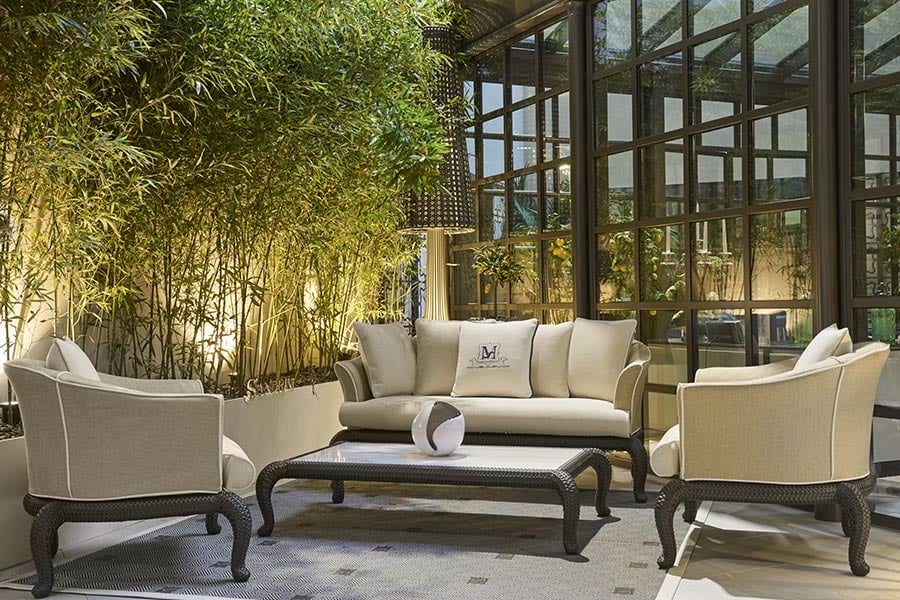
3. Choose a kitchen with an ergonomic layout: island, U or L
The kitchen forms the central area in the design of an open space layout.
To ensure that the integration of the dining area and conversation spaces also optimally includes the cooking area, choose a kitchen with an agile and ergonomic layout. Among the various options, here are the most suitable ones:
- Corner kitchen or an L kitchen: a layout adaptable to large and medium-sized spaces, in angular cut areas or large open spaces. This particular configuration leaves ample room for custom furnishings, thus offering the possibility of setting up the free space in the center of the kitchen area with tables, chairs, and sofas. In this way, it will be possible to create a convivial and livable atmosphere outdoors.
- U-shaped kitchen: an optimal configuration of the "working triangle," thus ensuring a comfortable performance of activities in the kitchen and 360-degree livability. In addition, the U-shaped layout is the most suitable for making the outdoor kitchen as livable and welcoming as a living area.
- Island kitchen: extremely versatile and comfortable layout as it works independently and constitutes an additional work, support, and storage space.
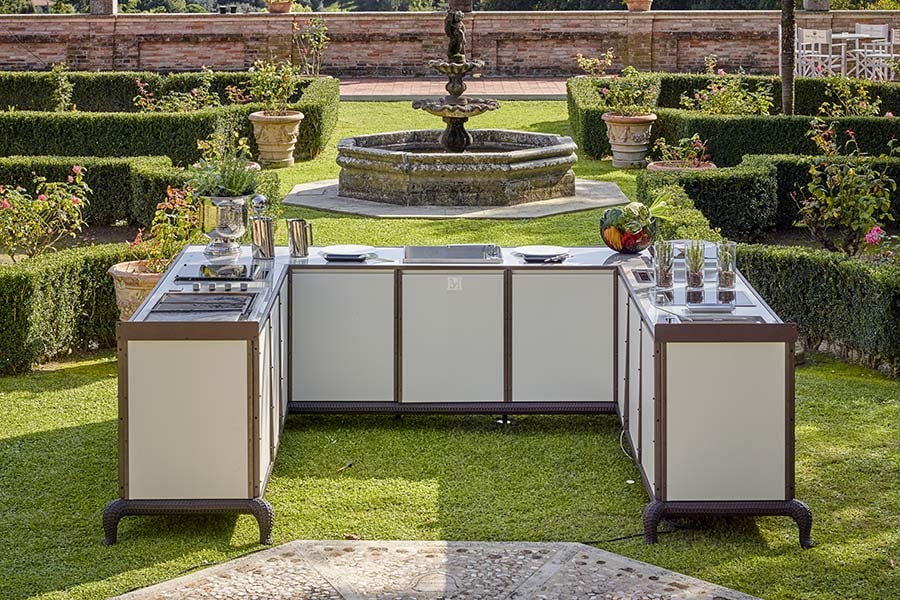
4. Living area: make sure that the arrangement of the furniture embraces the cooking area
To be sure that the kitchen area and the living area can be perceived as a whole, make sure that the arrangement of the living room furniture follows that of the kitchen.
To do this, you could arrange sofas and armchairs and furnishing accessories designed for this environment facing the kitchen, for example.
Do not forget to add design accessories that reflect the client’s taste and that know how to give the scenery an elegant and glamorous touch.
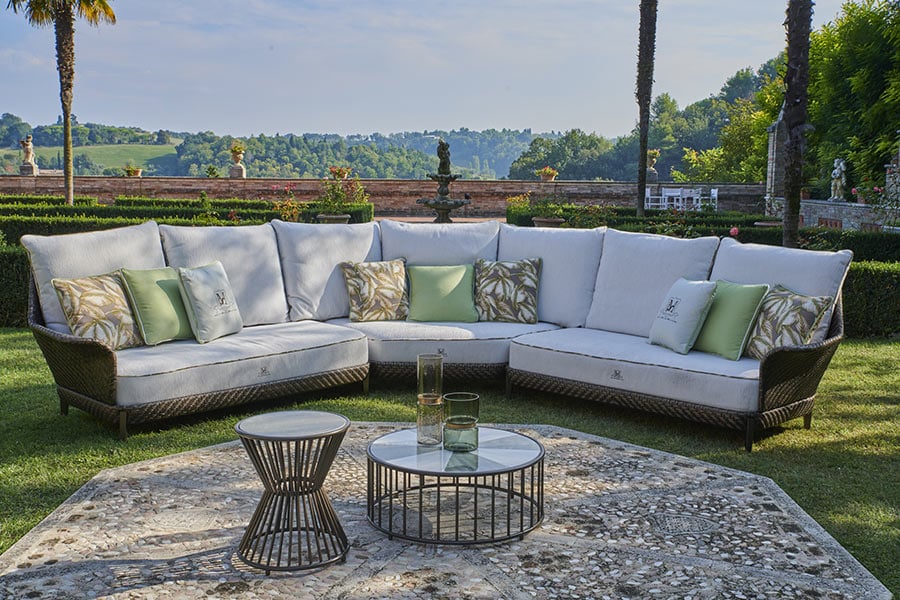
5. Dining area incorporated into the kitchen: take care of the arrangement of the dining set
To give a final touch and make the open space complete, take care of the arrangement of the dining set. You could place an elegant table and matching chairs in a corner next to the living area or a few meters from the cooking space.
Naturally, this set-up operation must be carried out with attention and respect for the spaces, trying not to create a furniture composition that is too full and not very functional.
The goal is to create a single welcoming and comfortable space that is easy to move around in and that allows you to live your best life.
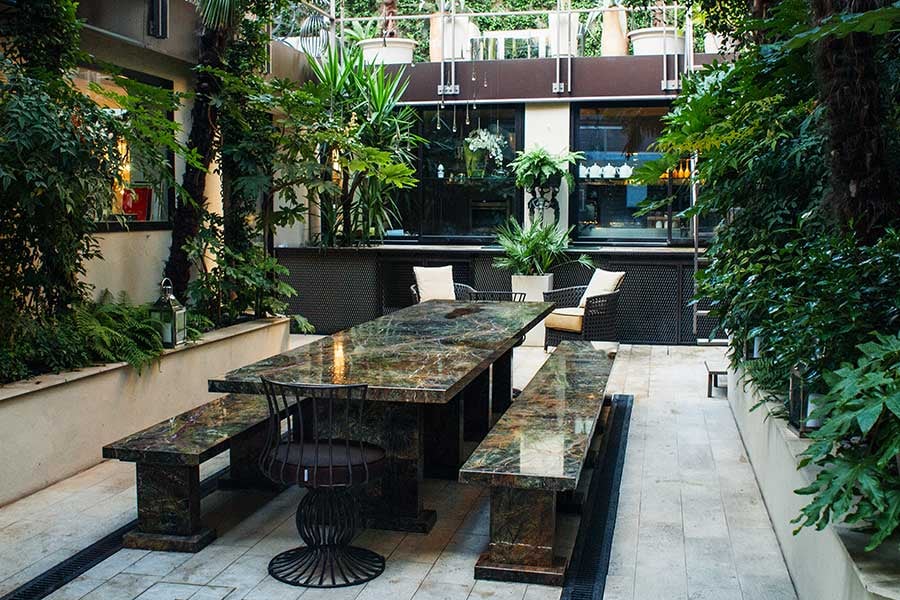
6. Last step: take care of the lighting
To put more emphasis on each area, strategically place decorative lamps, made with the best materials and certified for outdoor use, tastefully combined with each other, such as:
- Arched floor lamps, to be placed next to sofas, armchairs, and tables;
- Floor lamps, ideal for creating outdoor paths and providing greater lighting;
- Appliqués and suspension lamps, ideal for the living and dining areas, (in case your client wants to set up the open space inside an indoor structure).

Follow our guide on how to integrate dining and conversation spaces
Follow our tips for integrating the dining area and conversation spaces effectively.
This is the ideal solution for defining a fresh and modern furnishing atmosphere and, at the same time, maximizing the functionality of the home you are dealing with.



